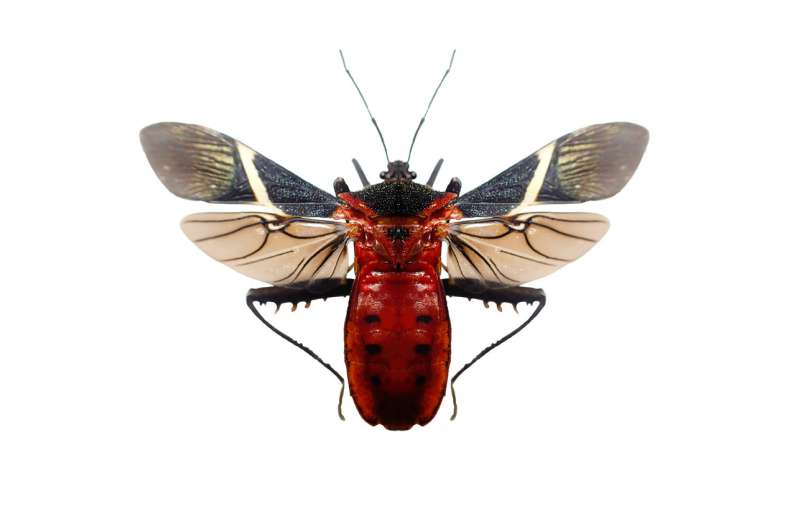Drop your weapons! Autotomy, the shedding of a body part, reveals the hidden cost of conflict

Animal weapons such as antlers, tusks and limbs specialized for fighting require a large energy expenditure to produce and may cost even more to maintain. Because the leaf-footed bug sheds its large hind limbs, used as weapons in male-male battles, scientists working at the Smithsonian Tropical Research Institute (STRI) in Panama could measure energy use of live bugs with and without hind legs to calculate the hidden energetic cost of weapons' maintenance.
Wild animals can spend up to 30 and 40 percent of their total energy budget while at rest. "Human athletes often burn more calories during their relatively long rest periods than during physical exercise itself," said Ummat Somjee, who did this study as part of his doctoral dissertation at the University of Florida in co-author Christine Miller's lab group and is currently a Tupper post-doctoral fellow at STRI.
"We calculated the metabolic cost of maintaining large hind legs in a leaf-footed bug and found that males invest more in weapons than females do," Somjee said. "Large males expend relatively less energy on their super-sized weapons than smaller males." The results are published online in Proceedings of the Royal Society B.
Male leaf-footed bugs, Leptoscelis tricolor, hang out on bright orange or red heliconia inflorescences, feeding on nectar and developing heliconia fruit. Their hind legs, covered with thorny structures, are larger than females' legs and serve as weapons in male-male duels.
"By dissecting legs and staining the tissue, we showed that the insects' tough exoskeleton is filled with metabolically active muscle tissue," said Meghan Duell, doctoral student at Arizona State University and co-author. "We realized that because these bugs shed their hind legs when molting or trapped, we could simply measure carbon dioxide production rates before and after a bug shed a leg to see how much energy was being expended on maintaining it."
The team discovered that the resting metabolic rate of one-legged bugs dropped by almost a quarter of the total (23.5 percent) in males and 7.9 percent in females. Heavyweight males had less of a drop in metabolic rate per gram of leg lost, indicating that the price of a big weapon is energetically lower than it is for light-weight males.
The largest deer develop especially enormous antlers for their body size and the biggest elephants have relatively heavier tusks than smaller individuals, but it is not known how energetically costly these structures are in most organisms. "Metabolic costs like these could be important in shaping the evolution of these diverse structures," Somjee said.
More information: Ummat Somjee et al, The hidden cost of sexually selected traits: the metabolic expense of maintaining a sexually selected weapon, Proceedings of the Royal Society B: Biological Sciences (2018). DOI: 10.1098/rspb.2018.1685
Journal information: Proceedings of the Royal Society B
Provided by Smithsonian Tropical Research Institute



















